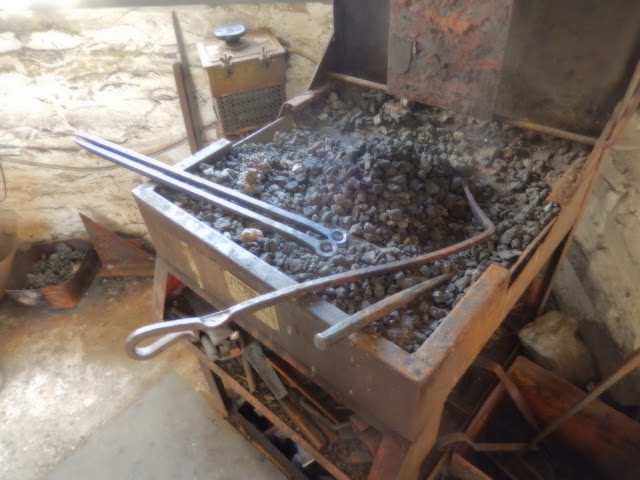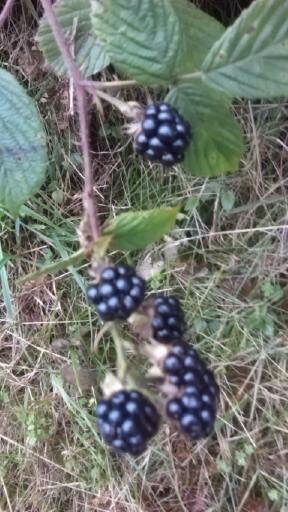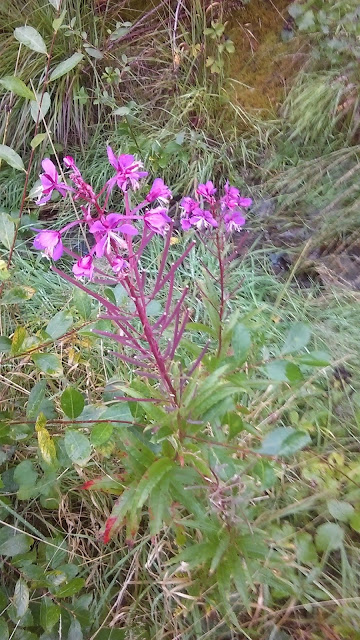Helo Pawb
Yesterday (Saturday, 17 Sep 16) marked two weeks I have been at my
Stiwdio Maelor residency, so I thought it time to post an update on my various activities.
My major aims for my time in Wales are writing, language and landscape. ‘Writing’, obviously, means my dark ages novel, though that doesn’t mean I won’t respond to other prompts from the muse. ‘Language’, again just as obviously, refers to my attempts at learning Welsh and finding opportunities for practicing it. Finally, ‘landscape’ means my desire to observe and absorb as much of the Welsh landscape as I can, for my soul and for the book. These first two weeks, I would say, have been successful on all counts.
 |
| My studio (Stiwdio Chwech) |
Writing
Since leaving Australia, I’ve averaged 3.5 hours of writing per day. This may not seem much, but it doesn’t take into account flight days and days spent staying with friends before my residency, as well my time on
Helfa Gelf and traipsing the countryside. I want to build this to four to five hours per day, though when I finish this first five weeks of my residency and go travelling for five weeks, my average is bound to drop. Anyway, in my two weeks at Stiwdio Maelor I have managed to accomplish the following:
Interdraft work (structural editing and conceptual re-jigging): 19.971 words
Draft 3 of the novel: 1,428 words
Blog posts and other writing: 3,197 words
Blog posts (including this one): 3
Haiku drafts: 11
Poem drafts: 1
And, unexpectedly, short story drafts: 1
I am quite happy with this output, though of course my focus, now that I’ve essentially finished the Interdraft work, is on continuing the novel redrafting.
 |
| My working space |
 |
| The view from my desk this morning |
 |
| My Ancient Britain and Roman Britain maps |
Language
Last year I went to hear Alan Garner talk about his work, which you can read about
here. On the way there, I suddenly felt a little disconcerted, a little weird. I wasn’t sure why, then I realised I had entered England and let behind the dual-language signage of Wales.
 |
| Traffic lights in Corris, because of water works |
 |
| In Welsh, the adjective comes after the noun |
While I am still a long way from fluency, my brain is used to seeing and, to some degree, comprehending Welsh words and signs. Since my arrival at Maelor, I have been to the Tuesday Welsh Discussion Group at the Corris Institute twice and am starting a Welsh class in Dolgellau tomorrow (Monday, 19 Sep). And on Friday I will be attending a Noson Siarad Cymraeg, a night of talking Welsh. No Saesneg (English) allowed. I think I might be listening more than speaking. I have also been practising
Duolingo Welsh, an online course, and listening to my downloaded
Say Something In Welsh sound files. I’m hoping that I can have half-decent conversations with shopkeepers and people around Corris by the time I leave here.
Landscape
As my previous postings (
here and
here) can testify, I’ve been out and about in the Welsh landscape, even if my fitness level meant I haven’t quite been bounding through the land. In the two weeks I’ve been here I have had four walks in total and, once my knees recover from the Cadair Idris climb, I intend to walk three to four times a week, weather permitting. I feel quite at home in the landscape and become so absorbed in it that I sometimes forget to take notes of trees, bird sounds, colours of moss and stone for my book. I’ll manage better the more walks I do.
Below are photographs from a walk I took along Afon Dulas late in the day:
 |
| The start of the path along Afon Dulas. For some reason my camera was on a Soft Focus. |
 |
| Night haze above the river |
 |
| View downstream |
That’s it for now. I hope your own works and days are going well. As always, I welcome any comments.
 |
| And more jackdaws, for those who remember my fascination with them last year. Photo was taken this morning. |
 |
| The mist on the hills behind my bedroom |
Cofion Cynnes
Earl


















































